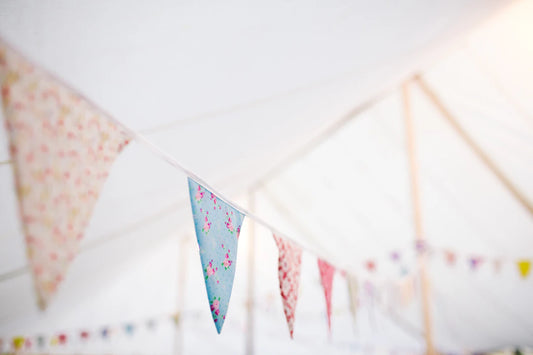Frequently Asked Questions
1. What are the benefits of using cloth nappies?
2. How can I effectively reduce waste when using cloth nappies?
3. What types of cloth nappies are available?
4. What are some eco-friendly washing practices for cloth nappies?
5. How can I get my family involved in using cloth nappies?
Embracing a sustainable lifestyle is a growing trend for parents worldwide, and using cloth nappies is a significant step towards reducing waste. Cloth nappies not only contribute to a healthier planet but also provide a variety of benefits for both your baby and your wallet. In this comprehensive guide, we explore how to effectively reduce waste when using cloth nappies and incorporate a fantastic Monthly Wipes Bundle to complement your eco-friendly journey. Let’s dive in!
Understanding the Importance of Reducing Waste
Before we delve into the practical steps for using cloth nappies efficiently, it’s crucial to understand why reducing waste is essential, especially when it comes to baby products. Traditional disposable nappies take hundreds of years to decompose in landfills, contributing significantly to environmental pollution. By switching to cloth nappies, you’re already making a significant impact.
According to research, a single child can use up to 6,000 disposable nappies during their diapering years. This staggering figure emphasizes the need for sustainable alternatives. Cloth nappies are reusable, made from organic materials, and when combined with a Monthly Wipes Bundle, you can further minimize waste produced during diaper changes.
Choosing the Right Cloth Nappy System
The first step in reducing waste with cloth nappies is to select a system that works best for you and your family. There are several types of cloth nappies available including:
- Prefold Nappies: These are simple cotton or bamboo pieces that can be folded and secured with a cover.
- All-in-One Nappies: As the name suggests, these are convenient since the absorbent material and cover are combined into one.
- Pocket Nappies: These feature a pocket where you insert absorbent material, allowing for customization based on your baby’s needs.
- Hybrid Nappies: A versatile option that allows you to use either cloth or disposable inserts.
Choosing the right cloth nappy system helps ensure your baby stays comfortable and dry while minimizing the amount of waste generated from disposables.
Creating a Stash That Works for You
Your cloth nappy stash should consist of a variety of sizes and types to accommodate your baby's growth and varying needs. Here are some tips to create an efficient cloth nappy stash:
- Start with a handful of each type of nappy to see what suits your routine best.
- Consider the climate; heavier fabrics might be necessary during colder months.
- Invest in larger sizes; babies grow fast, and having a diverse stash can save you from needing to purchase new nappies frequently.
Washing and Caring for Cloth Nappies
Proper laundering and care of your cloth nappies are crucial for maintaining their effectiveness and longevity. Additionally, adopting sustainable washing practices will amplify your waste-reducing efforts.
Prepping Your Cloth Nappies
Before using new cloth nappies, they may require several washes to achieve maximum absorbency. This process is essential as it ensures that the nappies perform at their best. Follow the manufacturer’s instructions regarding prepping to avoid any misunderstandings in care.
Washing Practices
Follow these guidelines for an eco-friendly washing routine:
- Use cold water to rinse off solids and switch to hot water for the washing cycle. Avoid hot washes for every cycle to save energy.
- Use a natural detergent that is free from dyes and fragrances to avoid skin irritation for your baby.
- Consider using a cloth nappy friendly detergent to ensure maximum efficacy and longevity of the fabric.
- Skip fabric softeners, which can reduce the absorbency of the nappies over time.
Drying Techniques
Drying your cloth nappies naturally is another way to minimize waste. Here are some effective methods:
- Line Drying: Air drying your nappies outside not only conserves energy but also ensures they smell fresh and helps disinfect the fabric.
- Tumble Drying: If you choose this method, opt for a low-heat setting and only when necessary, as excessive heat can degrade the fabric.
Complementing Cloth Nappies with the Right Wipes
When using cloth nappies, it’s important to couple them with environmentally friendly wipes. This is where a Monthly Wipes Bundle becomes a valuable addition to your routine. Here’s how to use them effectively:
Choosing Eco-Friendly Wipes
Look for wipes that are made from organic or sustainable materials. Biodegradable wipes are an excellent choice as they reduce plastic waste and break down more rapidly than traditional options. Consider adding a Monthly Wipes Bundle to your cloth nappy shopping list to stay ahead of your needs while making a positive impact.

Making Your Own Wipes
For the more adventurous, making your own cloth wipes is an excellent way to reduce waste further. Here’s a simple recipe:
- Cut soft fabric (like flannel or cotton) into squares.
- Create a solution of water, gentle baby soap, and a few drops of essential oil for a soothing scent.
- Moisten your fabric squares and store them in a reusable container.
This DIY approach not only cuts costs but also ensures that you know exactly what materials are making contact with your baby’s skin.
Engaging the Family in Waste Reduction
Getting family members on board with your cloth nappy journey is essential for maintaining a zero-waste household. Here are some strategies to involve everyone:
Educate and Involve
Share the benefits of using cloth nappies and sustainable wipes with others in your family. Prepare everyone for their role in this eco-friendly approach:
- Have family members responsible for specific tasks, such as washing, preparing, or even folding the cloth nappies.
- Learns about the environmental and financial impact of using cloth versus disposables together.
Lead by Example
Demonstrate how to use cloth nappies effectively and successfully. This hands-on approach helps others in the family understand the importance of the commitment to waste reduction.
The Financial Benefits of Using Cloth Nappies
While the initial investment in cloth nappies may be higher than disposables, their longevity offers greater financial savings in the long run. Here’s how:
- One cloth nappy can last through multiple children, drastically reducing the overall cost.
- By utilizing a Monthly Wipes Bundle, you can streamline costs and minimize waste simultaneously.
- Cloth nappies generally just require detergent and water for cleaning, which is much less expensive than continually purchasing disposables.
Raising Awareness in Your Community
Your journey doesn’t have to be a solo endeavor. Share your experience of using cloth nappies with other new parents in your community. Offering advice and encouragement can amplify the impact of your waste reduction initiative.
Organize Cloth Nappy Workshops
Gathering interested parents to hold workshops or informational sessions allows for sharing experiences and strategies on cloth diapering. This fosters a support network for sustainable choices.
Partner with Local Stores
Consider collaborating with local shops to provide discounts on cloth nappies or eco-friendly wipes through a community event. These kinds of engagements can help boost participation in sustainable practices.
Stay Inspired and Informed
The journey to reduce waste with cloth nappies and eco-friendly wipes doesn’t have to be overwhelming. Staying connected with online communities, reading articles, and participating in forums can keep your motivation high.
Explore social media platforms where like-minded parents share their journeys, successes, and challenges regarding the use of cloth nappies. Additionally, subscribing to newsletters or blogs focused on sustainability can constantly provide fresh ideas and product recommendations, including perks related to a Monthly Wipes Bundle.
Your Path to Eco-Friendly Parenting Awaits
In realizing the undeniable impact our choices have on the world, opting for cloth nappies combined with a thoughtful approach to wipes can pave the way toward a sustainable lifestyle for you and your baby. Not only will you honor and protect the Earth’s resources, but you’ll also engage your family, find financial savings, and create lasting habits that inspire others. Get started today—your journey toward eco-friendly parenting awaits!





